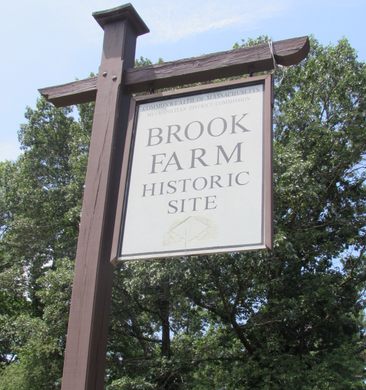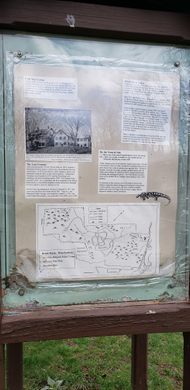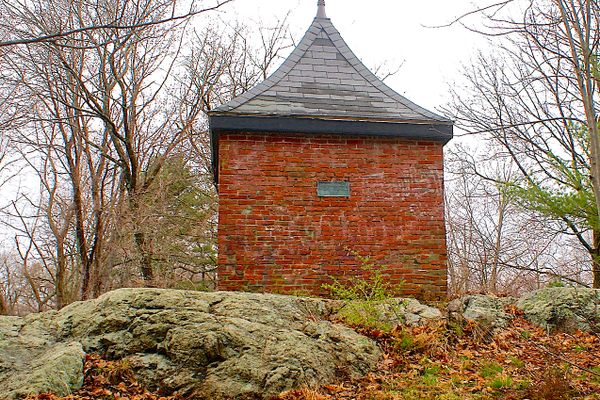Brook Farm
Site of a famous 19th-century transcendentalist utopian community, now abandoned.
Located alongside an orphan’s cemetery, the former site of Brook Farm commemorates the most famous utopian commune to ever have operated in the United States.
Established in West Roxbury in April 1841 by the transcendentalists George and Sophia Ripley, Brook Farm (also known as the Brook Farm Institute of Agriculture and Education) sought to equally distribute the tasks of daily life while providing education for all participants; the end goal was a balance of work and leisure that would, above all, benefit the greater good. Turning a profit from the farm’s agricultural surplus proved a challenge, and Brook Farm was forced to shutter in 1847.
Nonetheless, the experiment at Brook Farm played a key role in the development of American religious and cultural philosophy. During its heyday, the commune was visited by some of America’s most renowned thinkers of the period, including Charles Anderson Dana, Horace Greeley, Margaret Fuller, and Nathaniel Hawthorne. Hawthorne would ultimately set his novel The Blithedale Romance in a utopian community modeled after Brook Farm.
After its closure, the land would take a turn as a poor farm before becoming training grounds during the Civil War. Brook Farm’s most enduring reincarnation was that of an orphanage from 1872 to 1943 and the associated Gethsemane Cemetery, the latter of which still stands today.
While the majority of the original buildings are now gone save for the print shop, Brook Farm remains a fascinating roam through land fraught with layers of intellectual and emotional history that is distinctly American in nature.
Know Before You Go
Follow Google Maps' location and driving for the entrance at Baker Street.
Community Contributors
Added by
Edited by
The Atlas Obscura Podcast is Back!

























Follow us on Twitter to get the latest on the world's hidden wonders.
Like us on Facebook to get the latest on the world's hidden wonders.
Follow us on Twitter Like us on Facebook